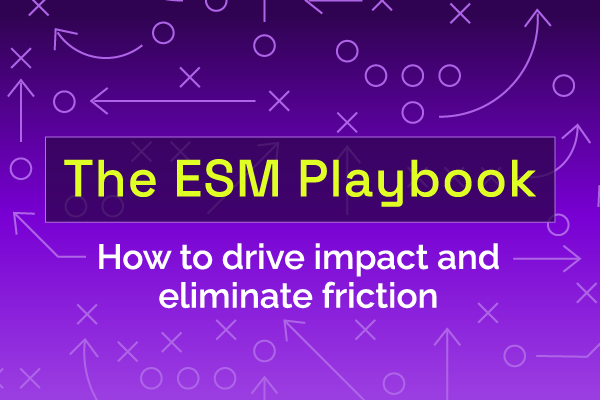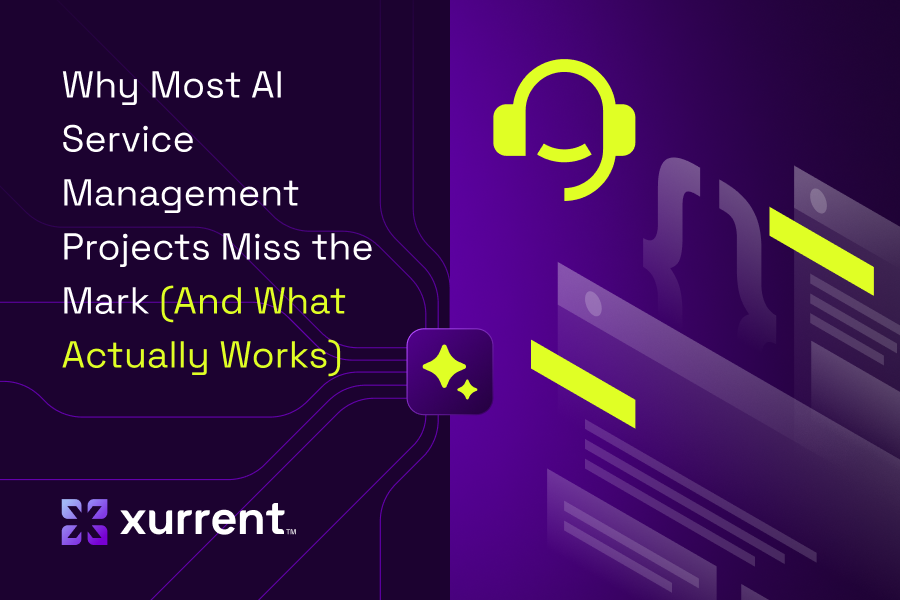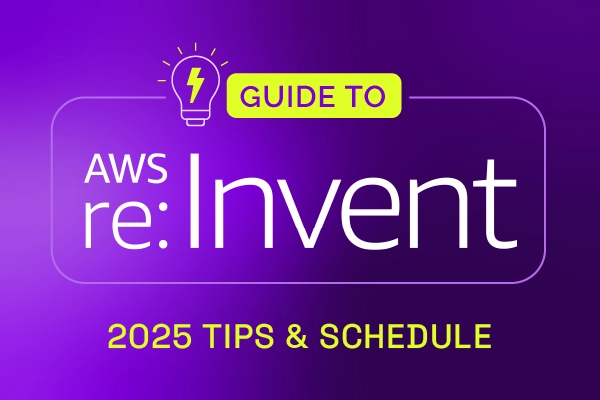What is ITIL 4 and Why Does It Matter for ITSM?
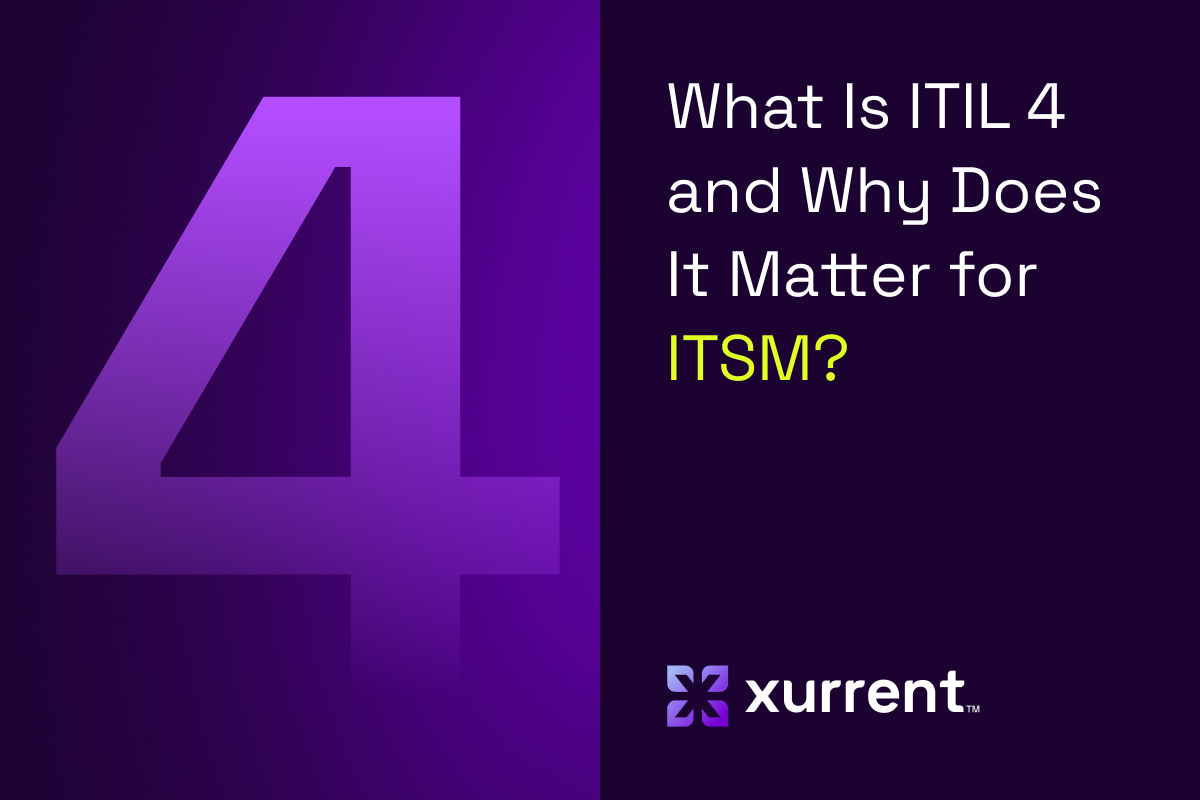
Let's be honest: IT service management can feel like trying to build IKEA furniture without instructions...while the furniture is on fire, your boss is asking when it'll be done, and someone submitted another ticket regarding the printer. Again.
Enter ITIL 4, the instruction manual you did not know you desperately needed.
If you've been in IT for more than five minutes, you've probably heard someone mention ITIL in a meeting. Usually followed by nodding heads and the distinct feeling that you should know what everyone's talking about. Well, you're not alone in this confusion. ITIL 4 is far less complicated than it sounds. In fact, it's designed to make your life easier rather than harder.
In this guide, we'll break down what ITIL 4 actually is, how it differs from ITIL v3, what certifications you need to know, and most importantly, how to apply ITIL 4 to modern IT Service Management. We'll also show you how platforms like Xurrent make implementing ITIL 4 principles less "six-month nightmare" and more "actually, we went live in four weeks."
What is ITIL 4 and Why Should You Care
ITIL stands for Information Technology Infrastructure Library. ITIL 4 is a big collection of best practices and frameworks for managing IT services. The ITIL framework is a comprehensive set of best practices and principles for Information Technology Service Management (ITSM), playing a key role in aligning IT services with business needs. Think of it as the playbook that helps IT teams deliver services efficiently and consistently in a way that actually supports business goals.
Released in 2019, ITIL 4 is the latest version of ITIL. ITIL has been around since the 1980s. Over the decades, ITIL has changed from a rigid, process-heavy framework into something far more flexible and relevant for today’s fast-moving digital world. The ITIL framework has become more flexible and widely adopted, supporting digital transformation and integrating with modern methodologies like Agile and DevOps.
At its core, ITIL 4 provides a structured approach to service management. It covers everything from how IT teams should organize their work to how they communicate with customers, handle incidents, manage changes, and continuously improve services.
A Brief History and Evolution of ITIL
The Information Technology Infrastructure Library, or ITIL, has a fascinating history that mirrors the evolution of the IT industry itself. ITIL was first developed in the 1980s by the British government’s Central Computer and Telecommunications Agency (CCTA) as a set of books outlining best practices for IT service management. Back then, the focus was on bringing order and consistency to the rapidly growing world of information technology services.
As technology advanced, so did ITIL. Each new version responded to the changing needs of organizations, from the rise of mainframe computing to the explosion of cloud services and digital transformation. The framework became a global standard for service management, helping IT departments deliver reliable, high-quality services that support business goals.
The release of ITIL 4 in 2019 marked a major leap forward. ITIL 4 is designed for today’s fast-paced, digitally enabled services environment. It provides a flexible, adaptable approach to service management that helps organizations navigate everything from cybersecurity to artificial intelligence. By focusing on value creation and continual improvement, ITIL 4 ensures that IT services remain aligned with business needs and can evolve as technology and customer expectations change.
In short, the evolution of ITIL reflects the journey from rigid, process-driven IT to a modern, value-focused approach that empowers organizations to thrive in the digital age.
The Key Components of ITIL 4 include:
Service Value System (SVS)
The SVS describes how all the parts and activities of an organization work together to create value through IT services. It’s the big-picture view that connects strategy to operations. ITIL processes are essential within the ITIL 4 service value system and management practices, ensuring that organizations follow ITIL guidelines to deliver quality and efficiency.
Four Dimensions Model
The Four Dimensions Model ensures you’re thinking about service management in a complete way. These dimensions are: Organizations and People, Information and Technology, Partners and Suppliers, and Value Streams and Processes. ITIL 4 reminds you that technology alone will solve your problems only when combined with the right people, partners, and processes. This model clarifies the relationship between ITIL and information technology service management, with ITIL serving as a framework for implementing ITSM best practices across these dimensions.
7 Guiding Principles
The Guiding Principles are seven recommendations that guide organizations: focus on value, start where you are, progress step by step with feedback, collaborate and promote visibility, think and work as a whole, keep it simple and practical, and optimize and automate. Successful ITIL adoption and organizational change management depend on company culture and the overall business structure, fostering collaboration and aligning IT with broader business objectives.

Unlike older versions, ITIL 4 embraces modern ways of working. It acknowledges that IT teams today need to be agile, work closely with development teams, and adapt quickly to change.
Platforms like Xurrent are built with ITIL 4 principles baked right in. Xurrent supports most ITIL competencies out of the box. It’s important to note that ITSM is not just a software solution, but a combination of people, processes, and technology, with software being one component of an effective ITSM strategy. And if you're looking for a new solution, we pride Xurrent's platform in being “Enterprise-ready without enterprise complexity.”
ITIL v3 vs ITIL v4 and What Changed
If you’re already familiar with ITIL v3, you might be wondering: “Do I really need to learn a whole new version?”
Short answer: ITIL v4 represents an evolution rather than a complete rewrite. Many core concepts from ITIL v3 are still there. But there are important updates that make ITIL 4 far more relevant for modern enterprises.
From processes to practices
ITIL v3 was heavily process-focused with 26 distinct processes organized across five lifecycle stages. It worked, but it could feel rigid and siloed.
ITIL 4 shifts to 34 “practices” instead of processes. Practices are more flexible and complete. They include processes, but also people, technology, and information. This shift acknowledges that real-world service management involves bringing together all the resources you need to create value. ITIL 4 expands on all the processes involved in IT service management, ensuring a more holistic and integrated approach that aligns with modern business needs.
Embracing Agile and DevOps
The world of IT has changed dramatically since ITIL v3 was published. Today’s IT teams work in sprints, deploy code multiple times a day, and collaborate closely with developers.
The ITIL v4 framework was designed with Agile, DevOps, and Lean principles in mind. It recognizes that modern IT goes beyond maintaining stability to enabling rapid innovation while maintaining reliability. The framework now integrates seamlessly with DevOps practices. By supporting business processes and promoting business agility, ITIL 4 enables organizations to respond quickly to changing demands through integration with Agile and DevOps methodologies.
This is where Xurrent’s approach really shines. The platform is fundamentally built as an automation platform that facilitates real-time cross-collaboration. This is exactly what the ITIL v4 framework encourages. Xurrent emphasizes “configuration instead of customization,” which aligns perfectly with ITIL 4’s principle of “keep it simple and practical.”
Focus on value beyond processes
ITIL v3 sometimes felt more concerned with following the process correctly than with actually delivering value to the business. ITIL 4 flips this on its head.
The Service Value System at the heart of ITIL 4 puts value creation front and center. Every activity, process, and decision should ultimately focus on delivering value to customers and stakeholders. Service strategy and continual service improvement are core components of the ITIL framework, ensuring that organizations define objectives, deliver value, and continuously enhance their IT services.
Xurrent embodies this value-first approach. With proof points like SEAS (a nuclear energy provider in Europe), Xurrent delivered $124K in annualized labor savings with nearly half of all requests resolved without manual intervention.
Better integration with other frameworks
ITIL v3 could sometimes feel like it existed in its own universe, separate from frameworks like Lean, Agile, or DevOps. The ITIL v4 framework actively encourages integration with these frameworks, recognizing that most organizations use multiple methodologies.
More flexibility and adaptability
ITIL 4 gives organizations more freedom to adapt practices to their specific context and needs. The guiding principles remind you to “start where you are” and “progress step by step.” ITIL 4 practices help optimize IT operations and workflows, making it easier for organizations to adapt and improve efficiency.
This flexibility is especially important for organizations using platforms like Xurrent. Xurrent offers a “right-sized” implementation philosophy. Rather than spending months on extensive customization, Xurrent delivers robust functionality through configuration, allowing teams to go live in as little as four weeks.
Many familiar concepts from ITIL v3 remain in ITIL 4. Incident management, problem management, change management, service desk operations, and service level management are all still there. If you’re already trained in ITIL v3, you’re building on what you know rather than starting from zero.
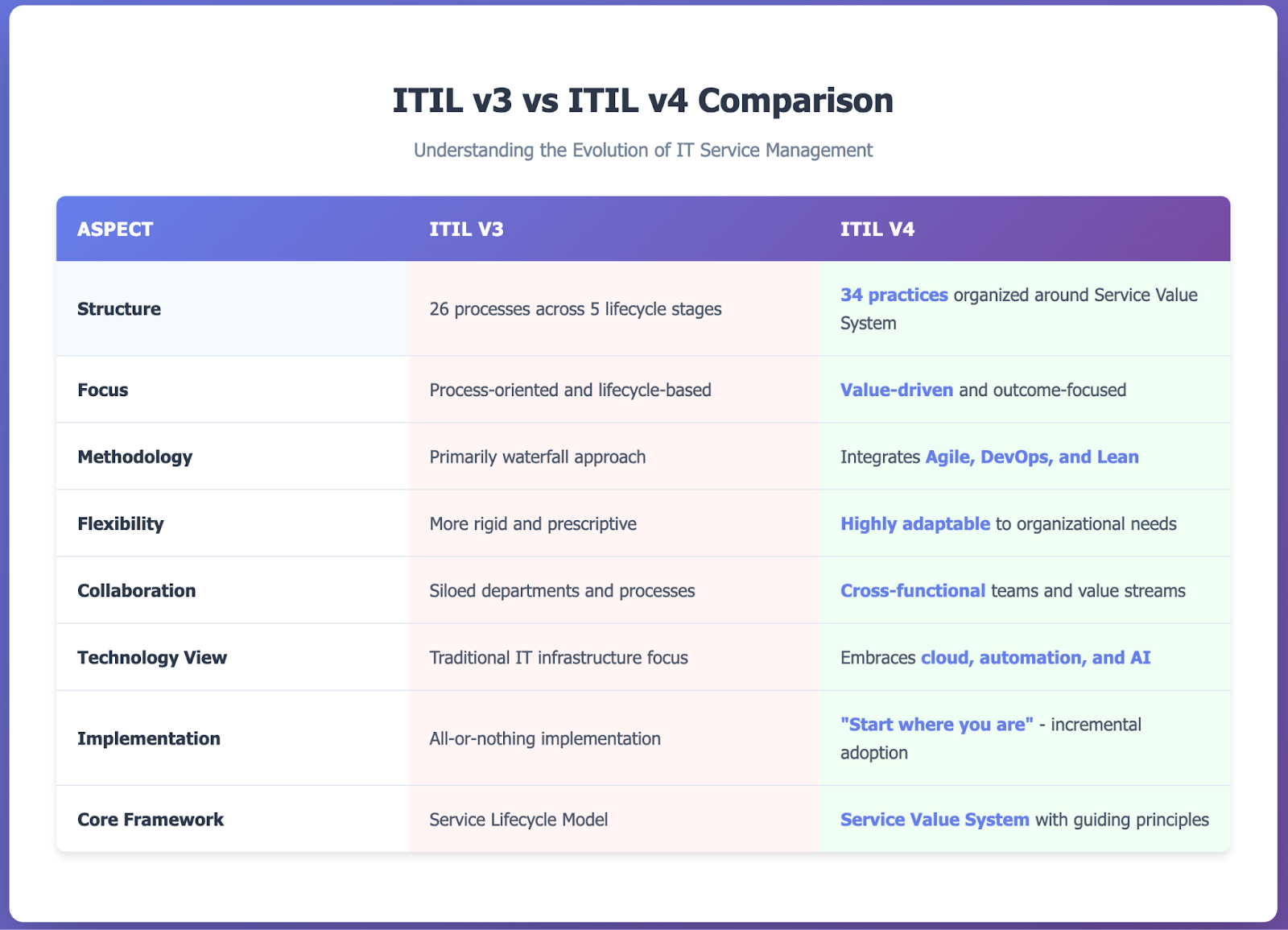
ITIL 4 Certifications and Your Path to Expertise
The ITIL certification scheme is designed to be flexible, allowing you to chart your own path based on your role and interests. ITSM is recognized as a professional discipline, and ITIL plays a crucial role in supporting this field by providing a structured approach to IT service management.
ITIL 4 Foundation is the entry-level ITIL Foundation certification for everyone. This certification introduces you to the key concepts of ITIL 4, including the Service Value System, the Four Dimensions Model, and the Guiding Principles. It covers the basics of the most important ITIL practices and gives you the vocabulary you need to participate in ITIL conversations.
There are zero prerequisites for the Foundation level. Anyone can take it. The exam consists of 40 multiple-choice questions, and you need to score at least 65% to pass. Most people prepare through self-study, online courses, or instructor-led training over a few days or weeks.

Once you’ve got your Foundation certification, you can choose your own adventure through four streams:
ITIL 4 Managing Professional (MP)
Designed for IT practitioners who work in technology and digital teams. This stream focuses on the practical, day-to-day aspects of running successful IT-enabled services, teams, and workflows. It includes four modules covering creation, delivery, support, stakeholder value, high velocity IT, and strategic planning.
ITIL 4 Strategic Leader (SL)
For those who want to understand how IT influences and directs business strategy. This stream focuses on the strategic aspects of ITIL and includes modules on strategic planning and digital leadership.
ITIL 4 Practice Manager
Practice Manager certifications are specialized modules that dive deep into specific ITIL practices. These are for practitioners who want to become experts in particular areas like incident management, change enablement, or service desk operations. ITIL Specialist certifications are also available as advanced qualifications for those seeking deeper expertise in specific ITIL practices.
ITIL 4 Master
Finally, the ultimate achievement is ITIL 4 Master, which requires you to demonstrate how you’ve applied ITIL concepts in real-world situations.
To get certified, first choose an accredited training organization. There are hundreds worldwide offering both in-person and online courses. Training typically costs between $500 and $2,000 per module, depending on the provider and format. After completing your training, you register for the exam through PeopleCert, the official ITIL examination body.
ITIL certification offers significant benefits for IT professionals and organizations, including improved service management, increased efficiency, and support for digital transformation initiatives. ITIL certifications are valuable, but what really matters is how you apply these concepts in practice. That’s where tools like Xurrent become invaluable. You can have all the ITIL certifications in the world, but if your ITSM platform fights you at every turn, you will struggle to implement best practices effectively. Implementing ITIL requires organizational readiness, staff engagement, and strategic planning to ensure successful adoption and alignment with business goals.
Xurrent is enterprise-ready and supports most ITIL competencies, holding SOC-2 and ISO certifications. This means when you’re applying your ITIL knowledge, you’re working with a platform that’s already aligned with ITIL 4 principles.
Applying ITIL 4 to ITSM and Making Theory Practical
You understand ITIL 4. Maybe you’re even certified. But how do you actually use it in real life? How do you take these frameworks and principles and turn them into better IT service management? ITSM and ITIL are closely related; ITSM is the broad methodology for managing IT services, while ITIL provides best practices and guidelines to implement ITSM effectively.
Start with the Guiding Principles
One of the biggest mistakes organizations make is trying to implement every ITIL practice all at once. Remember the guiding principle: “Start where you are.” Take an honest look at your current state. What’s working? What’s causing pain? Focus on those pain points first. Progress iteratively by making small, manageable changes and incorporating customer feedback at each step to ensure improvements align with user needs and satisfaction.
For example, maybe your incident management is chaotic. Tickets get lost, priorities are unclear, and nobody knows who’s supposed to be working on what. Instead of trying to simultaneously fix your change management, problem management, and service catalog, focus on incidents. Apply ITIL 4 incident management practices. Get that working smoothly. Then move on.
Xurrent’s approach embodies this principle. Rather than forcing organizations through massive, months-long implementations, Xurrent’s “right-sized” philosophy delivers functionality through configuration. Organizations like Fiskars implemented Xurrent in only 16 weeks from kickoff to go-live, seeing average ticket resolution time cut by 35%, user satisfaction up by 25%, and over 1,200 hours of manual work eliminated in six months.
Focus on value streams
ITIL 4 introduces the concept of value streams, which are the end-to-end series of activities that create value for customers. Instead of thinking of incident management, change management, and problem management as separate processes, think of how they work together to deliver value. ITSM processes and ITSM practices are essential in ensuring that the services offered to end-users are delivered efficiently and effectively.
When a customer reports an incident, the value stream might include: receiving the incident, diagnosing the issue, implementing a workaround, identifying the root cause, implementing a change to fix it permanently, and communicating the resolution to the customer. The service life cycle is integrated within ITIL 4’s Service Value Chain, enabling organizations to adapt and improve service delivery processes.
Xurrent’s platform facilitates this kind of cross-functional collaboration naturally. With its service-oriented, multi-tenant SaaS architecture, Xurrent seamlessly connects teams across boundaries and automates cross-functional workflows.
Leverage automation and AI
ITIL 4 emphasizes the guiding principle “optimize and automate.” In today’s world, this represents essential practice. Manual ticket routing, repetitive approvals, and copy-paste knowledge base articles waste enormous amounts of time. An effective ITSM solution combines people, processes, and technology to improve efficiency and streamline IT service delivery.
This is where modern ITSM platforms like Xurrent deliver game-changing value. Xurrent’s Sera AI goes beyond being a chatbot. It’s an intelligent fabric woven throughout every workflow, continuously enhancing productivity in the background. It surfaces insights, accelerates automation, and ensures accountability.
Look at the SEAS proof point: with Xurrent, they achieved $124K in annualized labor savings by avoiding approximately 4,300 hours of work, equal to more than two full-time employees. Nearly half of all requests and tasks were resolved without manual intervention, with 96% user satisfaction.
Embrace continuous improvement
ITIL 4’s Service Value Chain includes “Improve” as one of its core activities. This represents an ongoing mindset rather than a one-time project. Regularly review your service performance, gather feedback, analyze incidents and problems, and make step-by-step improvements. Continual service improvement requires a strategic approach to service management, ensuring that each change is aligned with business goals and delivers measurable value.
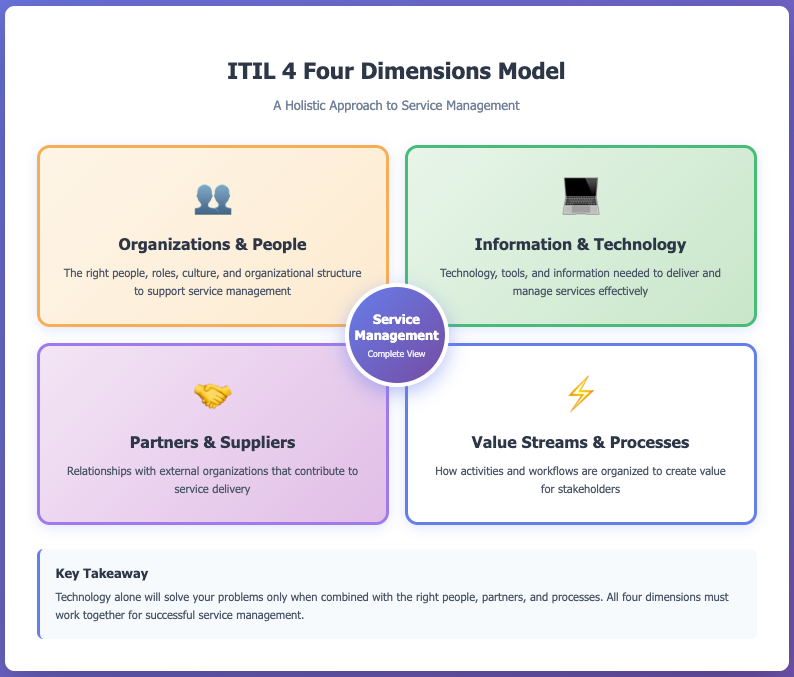
Xurrent supports this with real-time dashboards and advanced analytics that provide complete visibility into service performance. Leaders can monitor SLAs, track improvements, and strengthen operational resilience.
Extend beyond IT with ESM
One of ITIL 4’s most powerful applications is extending service management principles beyond IT. This is where Enterprise Service Management (ESM) comes in. The same practices that work for IT service delivery work equally well for HR, facilities, finance, and other departments. The IT service desk and IT organization play a crucial role in supporting business objectives and ensuring consistent service quality across all functions.
Xurrent extends ITSM into ESM seamlessly, creating a unified service fabric powered by embedded AI. By streamlining service management beyond IT to HR, facilities, finance, and more, organizations deliver consistent, high-quality services across every department.
Keep it simple and practical
You need to implement every ITIL practice to benefit from ITIL 4 only if all 34 practices serve your organization. Your organization might only need 10 or 15 of them. That’s fine. ITIL 4 explicitly encourages you to “keep it simple and practical.” It’s important to adopt ITSM and implement ITSM best practices to ensure your approach is tailored, effective, and sustainable.
This is where Xurrent’s messaging resonates: “Enterprise-grade without enterprise complexity.” With the right platform and approach, you can go live in four weeks and start seeing results immediately.
Building Your ITIL Experience with the Right Tools
Getting ITIL certifications is one thing. Building real ITIL experience is another. ITIL experience comes from actually applying these frameworks in real work situations, solving real problems using ITIL practices, and seeing how ITIL 4 principles transform your organization. The IT Infrastructure Library (ITIL) serves as the foundation for ITIL, providing a comprehensive set of best practices for IT service management that help organizations improve productivity and reduce costs.
The best way to build ITIL experience is to work with tools that support ITIL practices naturally. ITIL adoption is crucial, and platforms like Jira Service Management make it easier to operationalize ITIL frameworks and best practices, streamlining IT service management and incident management. When your ITSM platform aligns with ITIL 4 principles, you can focus on applying what you’ve learned rather than fighting with your tools.
Xurrent provides an environment where you can build genuine ITIL experience quickly. Because the platform supports ITIL competencies out of the box, you can immediately start applying ITIL practices like incident management, problem management, change enablement, and service level management. The IT department and a well-managed IT infrastructure play a key role in supporting ITSM initiatives and ensuring operational efficiency and scalability. You gain hands-on ITIL experience while delivering real value to your organization.
Aligning IT investments with your overall business structure and goals is essential for maximizing the value of your technology assets. This approach ensures that IT efforts support broader business objectives and drive meaningful outcomes.
Feedback and Collaboration in ITIL 4
Feedback and collaboration are at the core of delivering exceptional IT services in the ITIL 4 framework. Gathering feedback from customers and stakeholders allows IT teams to understand what’s working, what needs improvement, and how services can better align with business objectives. This ongoing dialogue ensures that service delivery remains focused on real needs and drives continual improvement.
Collaboration, meanwhile, breaks down silos and brings together different teams, departments, and even external partners to work toward common goals. By sharing information and working together, organizations can resolve issues faster, innovate more effectively, and deliver services that truly support business objectives.
ITIL 4 provides clear guidance on how to integrate feedback and collaboration into everyday service management. This includes regular reviews, open communication channels, and cross-functional teamwork. The result? IT services that are more responsive, efficient, and aligned with both customer expectations and business strategy. By making feedback and collaboration a priority, organizations can boost customer satisfaction, reduce costs, and ensure that their IT services are always moving in the right direction.
Making ITIL 4 Work for Your Organization
ITIL 4 is a practical, flexible approach to service management that actually works when you apply it thoughtfully and use the right tools to support it. By aligning IT services with business processes, ITIL 4 ensures that IT practices directly contribute to achieving organizational goals and promote a holistic view of workflows.
The key takeaways? The ITIL v4 framework is more flexible and value-focused than its predecessor. It embraces modern methodologies like Agile and DevOps. ITIL certifications paths are accessible and allow you to specialize based on your role. And most importantly, applying ITIL 4 becomes straightforward and efficient when you’re using a platform designed with ITIL 4 principles built in.
Whether you’re managing IT services for a 5,000-person enterprise or you’re an MSP supporting multiple clients, ITIL 4 provides the framework you need to deliver consistent, high-quality services. And with platforms like Xurrent, purpose-built for modern enterprises with AI-powered automation, rapid implementation, and low total cost of ownership, you can turn ITIL theory into practical results faster than you ever thought possible.
Ready to see how ITIL 4 principles come to life in a modern ITSM platform? Learn more regarding how Xurrent helps organizations boost productivity and streamline service management at https://xurrent.com.
Because at the end of the day, ITIL 4 focuses on making your organization more productive each and every day.
Frequently Asked Questions About ITIL 4
What are the 4 key components of ITIL 4?
ITIL 4 is organized around the Service Value System (SVS) and the Four Dimensions of Service Management. The “four components” most people mean are the Four Dimensions: (1) Organizations & people, (2) Information & technology, (3) Partners & suppliers, and (4) Value streams & processes. These ensure a holistic view of service management across people, tech, suppliers, and flow of work. The SVS itself comprises guiding principles, governance, the service value chain, continual improvement, and practices.
What are the 7 guiding principles of ITIL 4?
The seven principles are: Focus on value; Start where you are; Progress iteratively with feedback; Collaborate and promote visibility; Think and work holistically; Keep it simple and practical; Optimize and automate. These are intended to be universal, enduring recommendations that guide decisions and actions at all levels.
What are the ITIL 4 certifications?
The current scheme starts with ITIL 4 Foundation, then branches into streams and modules you can mix based on role and goals:
- Managing Professional (MP): Create, Deliver & Support (CDS); Drive Stakeholder Value (DSV); High Velocity IT (HVIT); Direct, Plan & Improve (DPI).
- Strategic Leader (SL): Digital & IT Strategy (DITS) and DPI.
- Practice Manager (PM): Practice-based modules that go deep on individual practices (e.g., Incident Management, Change Enablement).
- Extension Modules: e.g., Sustainability in Digital & IT; Acquiring & Managing Cloud Services; Business Relationship Management; IT Asset Management.
- ITIL Master: Top-level recognition achieved upon completing PM, MP, and SL streams (no separate application).
Official exams and details are administered by PeopleCert (ITIL’s owner/certifier).
Do I need prior ITIL experience to take ITIL 4 Foundation?
No. ITIL 4 Foundation has no prerequisites; it’s the entry point that covers the SVS, Four Dimensions, and core practices. Experience helps, but it isn’t required.
What are the 34 ITIL 4 practices?
In ITIL 4 they’re called management practices (not processes) and grouped into three buckets:
General management practices (14): Strategy management; Portfolio management; Architecture management; Service financial management; Workforce & talent management; Continual improvement; Measurement & reporting; Risk management; Information security management; Knowledge management; Organizational change management; Project management; Relationship management; Supplier management.
Service management practices (17): Business analysis; Service catalogue management; Service design; Service level management; Availability management; Capacity & performance management; Service continuity management; Monitoring & event management; Service desk; Incident management; Service request management; Problem management; Release management; Change enablement; Service validation & testing; Service configuration management; IT asset management.
Technical management practices (3): Deployment management; Infrastructure & platform management; Software development & management.
What’s the difference between ITIL v3 and ITIL 4?
- From lifecycle to value system: ITIL v3 organized 26 processes across five lifecycle stages (Strategy, Design, Transition, Operation, CSI). ITIL 4 replaces the lifecycle view with the Service Value System and 34 practices, emphasizing flow of value and adaptability.
- From processes to practices: ITIL 4’s practices include people, processes, information, and tech—so teams can tailor operating models instead of following prescriptive process maps.
- Better alignment with modern ways of working: ITIL 4 explicitly integrates Agile, DevOps, Lean, and continuous improvement.
How does this map to Xurrent in practice?
Xurrent operationalizes ITIL 4 with configuration over customization, embedded Sera AI across workflows, and fast go-lives—so you can apply the practices (incident, change, problem, request, SLM, etc.) without months of process re-engineering. (See our Messaging Framework for details on time-to-value and proof points like Fiskars and SEAS.)

Xurrent named a Market Leader in Research In Action’s Vendor Selection Matrix™ for IT & Enterprise Service Management Solutions
Xurrent earns #1 rankings in customer satisfaction, price vs value, and recommendation index in Research In Action's global ITSM/ESM Vendor Selection Matrix report.



